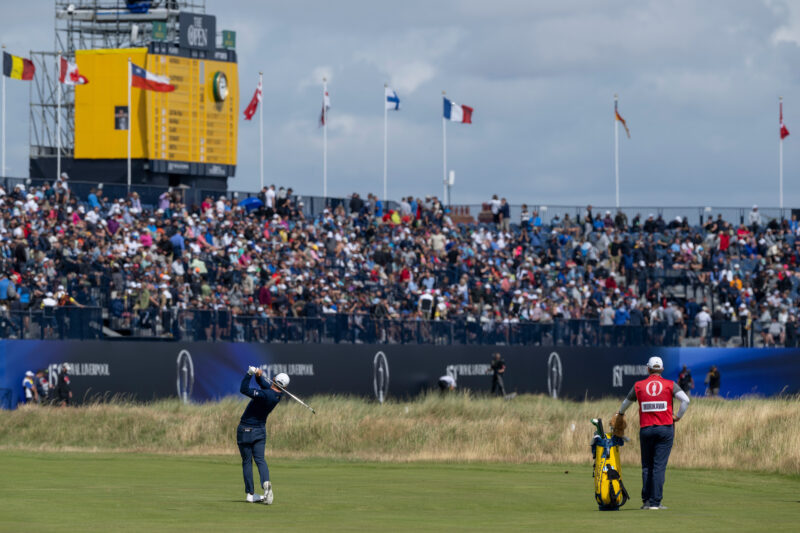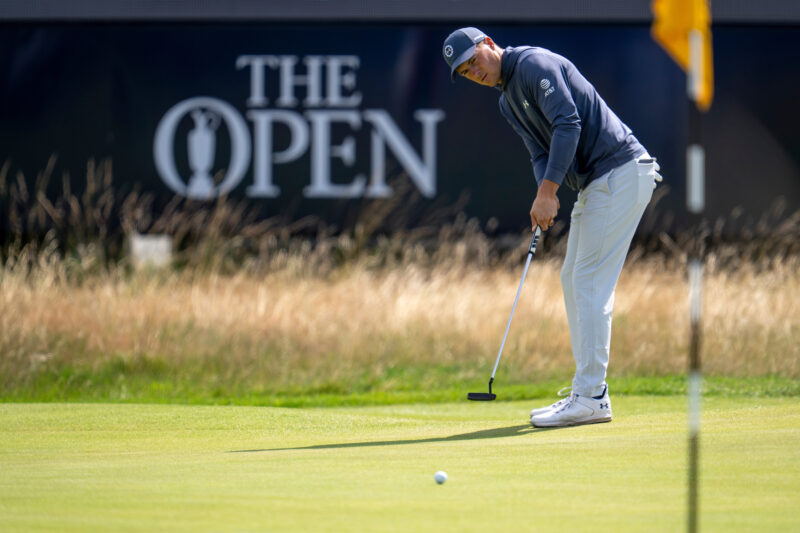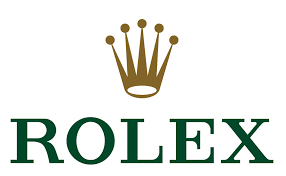GENEVA, Switzerland – For more than 160 years, The Open has been one of the ultimate tests for the world’s finest players and a stage where golf’s history is writ large. To succeed at the sport’s oldest major championship requires skill, patience and adaptability in the face of demanding links courses and unpredictable weather.
The fourth and final men’s major championship of the year, The Open, takes us back to the roots of the ancient game, evoking the sport’s core values: respect for tradition, humility and integrity. Rolex has been Official Timekeeper at the prestigious Championship since 1981 and Premier Partner since 2018.
Golf’s original major, The Open, is staged on the world’s outstanding links courses across England, Scotland and Northern Ireland.
This year, The 152nd Open will take place at one of the most fabled links courses, at Royal Troon in South Ayrshire, Scotland, from 14–17 July.

Since 1872, the winner of The Open has been awarded the famous Claret Jug and is named the Champion Golfer of the Year. To win this Championship requires tackling not only the weight of history but also the forces of nature in the form of formidable links courses, characterized by undulating surfaces on the windswept fairways and greens.
Succeeding at The Open has been the crowning achievement for some of the game’s greatest players, including ‘The Big Three’ – Arnold Palmer (1961, 1962), Jack Nicklaus (1966, 1970, 1978) and Gary Player (1959, 1968, 1974) – and fellow Rolex Testimonees Tom Watson (1975, 1977, 1980, 1982, 1983) and Tiger Woods (2000, 2005, 2006).
Palmer and Watson enjoyed particular success at Royal Troon, having triumphed there in 1962 and 1982, respectively. By winning in 1962, Palmer secured his second consecutive title, finishing six strokes ahead of the second-place finisher, while setting what was then a 72-hole record at The Open of 276.
Other members of the Rolex family to have triumphed at The Open in more recent years include Jordan Spieth (2017), Francesco Molinari (2018), and Collin Morikawa (2021). By winning in 2017, Spieth joined Nicklaus as the only golfers to win three different major championships before the age of 24.
Reflecting on this achievement, Spieth said, “This is something that is very special. I did not really think of the historical significance of the achievement at the time because it was such a crazy final round at The Open. It also occurred in the middle of a season, where I was in pursuit of the FedEx Cup, so there was a lot going on.

“It was when I looked back at my achievements that I started to process the historical relevance of it. To be placed in a category with or linked to Jack Nicklaus is pretty amazing. Mr. Nicklaus is not only a legend on the golf course, with his record for the most major championships, but he is also such true a gentleman off the course.”
By winning in 2021, Morikawa claimed his maiden title at The Open and second major crown. Commenting on the significance of this, Morikawa said, “Winning one major championship is a hard target in itself, but to win two is special. It places you in another club, and being part of this shared history, and the names that you will be associated with for the rest of your life, is so special. It cannot be taken away from you. It really is hard to describe.”
In 1981, Rolex clocks appeared on a championship golf course for the first time, at Royal St George’s for The Open, and they have adorned courses hosting the championship every year since. The Open is organized by The R&A, who, together with the United States Golf Association (USGA), govern the game of golf worldwide.
Associating with The R&A marked a pivotal moment in Rolex’s relationship with golf, and the forging of this early partnership showcased the brand’s commitment to the sport, founded on mutual respect, integrity and competitive spirit.
Founded in 1878, Royal Troon is one of the great links courses, a stern test of even the best golfers, where accuracy is essential when battling the elements. In 2024, it will host The Open for a tenth time, having previously staged the Championship in 1923, 1950, 1962, 1973, 1982, 1989, 1997, 2004 and 2016. The course is designed in the traditional out-and-back manner of the Old Course at St Andrews, the home of golf.

Royal Troon’s test begins with a gentle opening through striking links land and concludes with a back nine as tough as any finish in the world. The course is steeped in history and famous for its 8th hole, named the “Postage Stamp”. The tee is on high ground and a dropping shot is played over a gully to a long but extremely narrow green set into the side of a large sandhill. Many top players have struggled on the shortest hole in the history of The Open.
The 11th hole, aptly named the “Railway” due to the railway line running alongside, presents another stiff challenge and was rated the most difficult hole at The Open in 1997.


